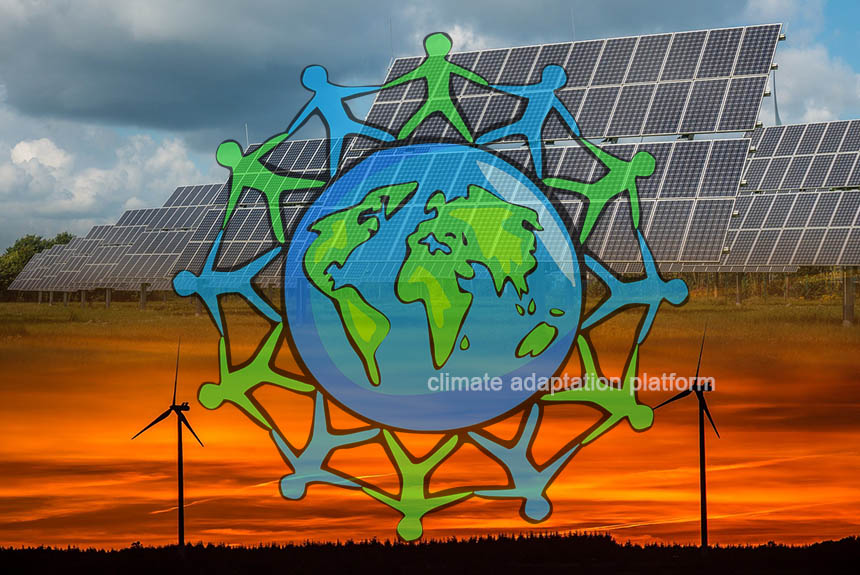2025 will be a pivotal moment for the world in its effort to combat climate change. 2025 is the year when parties will again submit their new Nationally Determined Contributions (NDCs), which they do every five years. The first submission was in 2020, and every five years after that.
The parties are the 196 countries that negotiated the Paris Agreement, a legally binding international treaty on climate change, adopted in Paris, France, on 12 December 2015. The Agreement was enacted on 4 November 2016 to keep the global average temperature well below 2°C above pre-industrial levels and to pursue efforts to limit the temperature increase to 1.5°C above pre-industrial levels.
In recent years, however, global leaders have stressed limiting warming to a 1.5°C temperature by 2100 because exceeding this temperature will risk unleashing extreme climate change events and impacts, including more frequent and severe heatwaves, droughts, storms, rainfall, and floods.
The UNFCCC clearly states that to achieve the Paris Agreement goal of a 1.5°C temperature limit, greenhouse gas emissions must peak by 2025 the latest and decline by 43% by 2030.
The Paris Agreement (Article 4, paragraph 2) requires each party to submit new nationally determined contributions (NDCs) every five years, with each one expected to be stronger and more ambitious than the last regarding its climate goals.
A country’s NDC embodies efforts by each country to reduce national emissions and adapt to the impacts of climate change.
However, NDCs to date are not sufficient to meet the Paris Agreement. According to the UNEP 2023 report, implementing the current NDCs would put the world on track to a catastrophic 2.5°C to Nationally Determined Contributions (NDCs) would put the world on track for limiting temperature to 2.9°C of warming by 2100.
In speaking about the report, Simon Stiell, Executive Secretary of UN Climate Change, highlights the stark reality that the current NDCs fall short of the Paris Agreement targets. He says “that governments combined are taking baby steps to avert the climate crisis. And it shows why governments must make bold strides forward” (New Analysis, 2023).
The World Resource Institute article “Next-generation Climate Targets: A 5-Point Plan for NDCs” focuses on strategies that countries can take for enhancing the new Nationally Determined Contributions (NDCs) to combat climate change and discuss the approaches and recommendations for strengthening their commitments in meeting the Paris Agreement.
The article notes that since countries submitted their NDCs in 2020, there have been key developments that can step up their climate commitments. For example, most countries have net zero emissions targets by or around 2050. The IPPC’s latest report shows that the climate impacts are getting more severe, reinforcing the need to adapt and mitigate emissions and increase funding for these two climate actions.
Anticipating the newest round of NDCs that parties will prepare for next year, the WRI proposes five suggestions on how countries should prepare them.
The WRI five-point plan for Next Generation NDCs:
1. Set 2035 and strengthen 2030 emissions-reduction targets aligned with the goals of having 1.5°C and net-zero emissions.
This entails that major emitters, developed economies, and historically large emitters should lead in their commitment to deeper emissions cuts than their current NDCs while providing more finance to help developing countries accelerate their climate actions. All countries should set targets that include non-CO2 greenhouse gases such as methane.
2. Accelerate systemwide transformations by establishing ambitious, timebound sectoral targets.
Achieving a temperature rise of 1.5°C degrees C will require the transformation of every sector. Countries should also set sector-specific emission reduction targets and start a process for industries to integrate them into their strategic planning, which could guide policymaking across all government levels.
3. Build resilience to increasingly dangerous and irreversible impacts.
Despite NDCs’ focus on mitigation, the escalating impacts of climate change, such as heatwaves, heavy rains, floods, droughts, etc., necessitate that NDCs elevate the political profile of climate adaptation and facilitate much-needed shifts in policies and finance.
4. Spur investment and strengthen governance to turn targets into practice. NDCs should not merely remain commitments and pledges but must also lay the groundwork for implementing them.
This includes a vision for how government ministries, subnational governments, the private sector, civil society, and others will collaborate to turn ambition into reality through policies, institutions and finance.
5. Put people at the centre, ensuring climate action creates jobs, improves health and more.
Climate change has widespread consequences but also provides benefits when governments address them. NDCs should draw a link to many of the issues that are critical for people’s lives – from employment to health to local economies and beyond.
Doing so will maximize the economic, development, and social opportunities from well-planned climate policies and address the challenges of loss of livelihoods for workers in the fossil fuel industry or certain land use types. Considering these issues is also critical for building public and political support for more excellent climate action.
“Our five-point plan offers a blueprint for success: setting ambitious emissions-reduction targets aligned with the 1.5 degrees C limit, accelerating sectoral transformations, building resilience across all systems, catalyzing multi-stakeholder action and investment, and putting people at the center of climate action. By embracing these principles as they craft next-generation NDCs, countries can not only help avoid the devastating impacts of climate change but also unlock opportunities for sustainable development, job creation, and better public health” (Srouji, J. et al., 2024).
Sources:
Srouji, J. et al. (2024, April 25). Next-generation Climate Targets: A 5-Point Plan for NDCs. World Resource Institute. Retrieved from https://www.wri.org/insights/next-ndcs-5-point-plan
Emissions Gap Report 2023. (2023, 20 November). UNEP. Retrieved from https://www.unep.org/resources/emissions-gap-report-2023
Nationally Determined Contributions in 2025 – Shaping the next round of NDCs. (2023, 8 December). NDC Partnership. Retrieved from https://ndcpartnership.org/events/nationally-determined-contributions-2025-shaping-next-round-ndcs
Nationally Determined Contributions (NDCs). UN Climate Change. Retrieved from https://unfccc.int/process-and-meetings/the-paris-agreement/nationally-determined-contributions-ndcs
New Analysis of National Climate Plans: Insufficient Progress Made, COP28 Must Set Stage for Immediate Action. (2023, November 14). United Nations Climate Change. Retrieved from https://unfccc.int/news/new-analysis-of-national-climate-plans-insufficient-progress-made-cop28-must-set-stage-for-immediate
The Paris Agreement. United Nations Climate Change. Retrieved from https://unfccc.int/process-and-meetings/the-paris-agreement



Leave a Reply